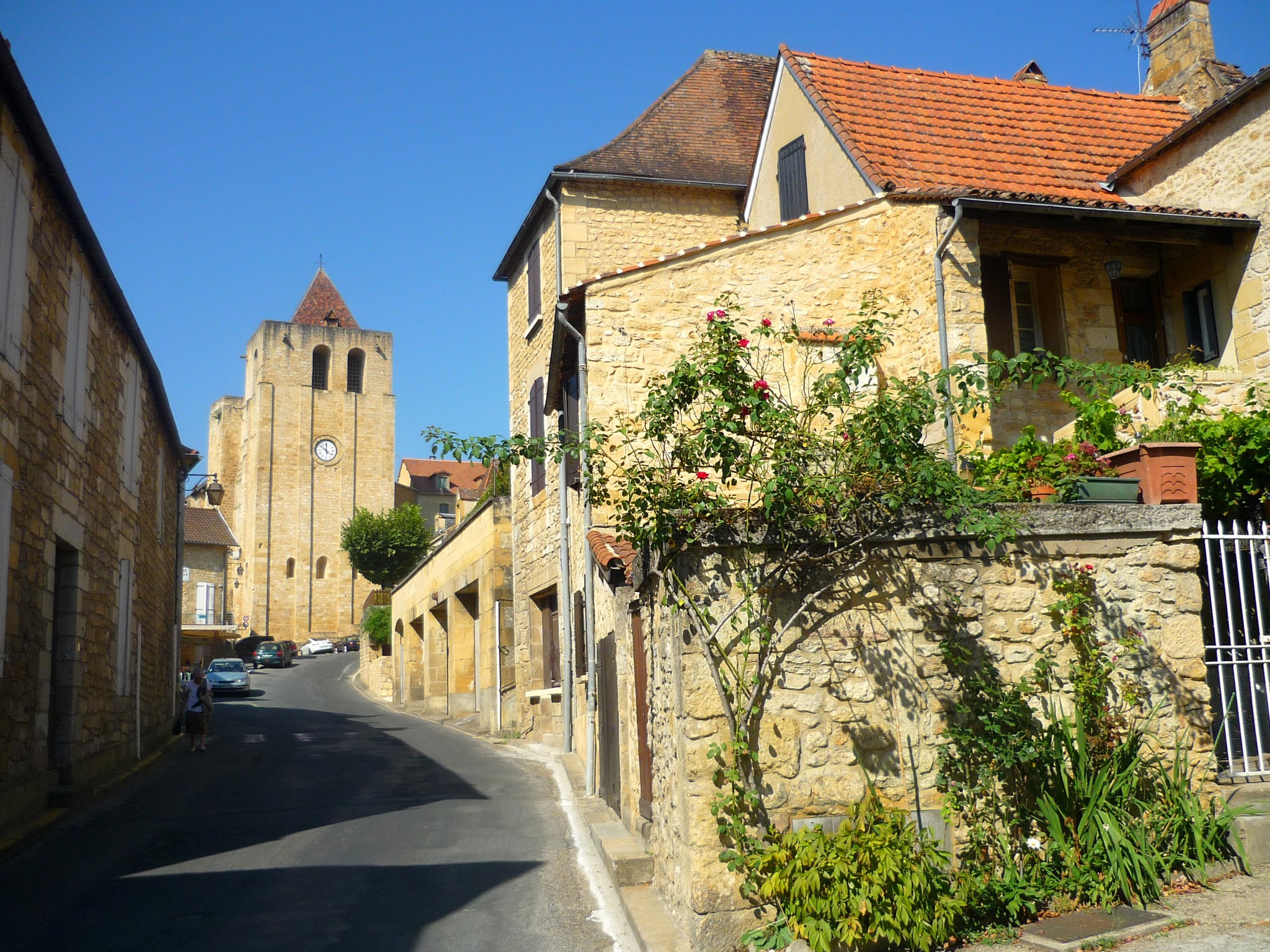Saint-Cyprien enjoys an enviable position established on a hillside on the right bank of the Dordogne Valley. The narrow streets wind uphill towards the abbey church which dominates the charming village and looks down on the typical Périgordian roofs.
History
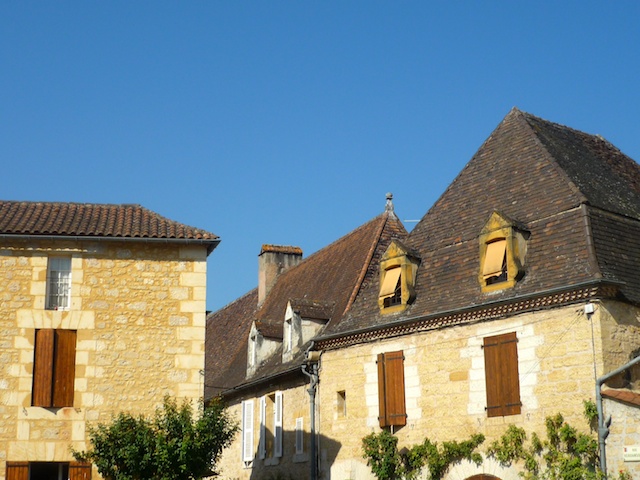
The history of Saint-Cyprien is closely linked to that of the abbey.
The village owes its name to Cyprien, a hermit who settled in the nearby Fages caves circa 620 AD. The miracles that supposedly took place at his tomb compelled other monks to start a monastic community.
From 848, the Barbarian Invasions led the monks to protect themselves behind the high walls of the monastery.
In 1076, the Augustine priory was so flourishing that the archbishop of Bordeaux, Bertrand de Got (later known as Pope Clement V), placed it under his jurisdiction.
During the Hundred Years War, Saint-Cyprien suffered from its position at the border separating the Kingdom of France and the English province of Aquitaine.
The village and its abbey were ransacked and burnt by the Protestant armies in 1568 during the Wars of Religion. It is said that the nave of the church was used as an arsenal where cannons were melted down.
The priory was partially rebuilt in 1685 and the keep tower connected clumsily to the church.
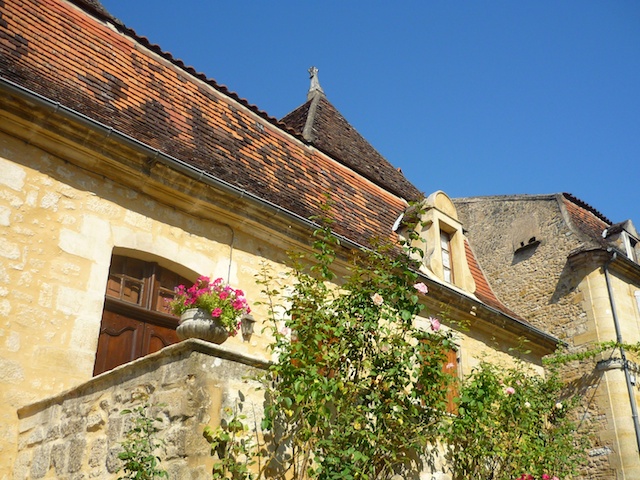
The abbey was sold to the municipality on the 23rd April 1791 as a “bien national” (national asset) and the church was transformed as a “Temple of Reason dedicated to the Supreme Being” in 1792.
In 1871, the abbey was used as a warehouse by the French State Tobacco Company (Régie des Tabacs) for storage purposes. The cloister was destroyed and the doors leading to the church blocked off. In 1923, the church was listed as a “Monument Historique” for the second time. The first listing dated back to 1841 before being downgraded in 1883.
The village
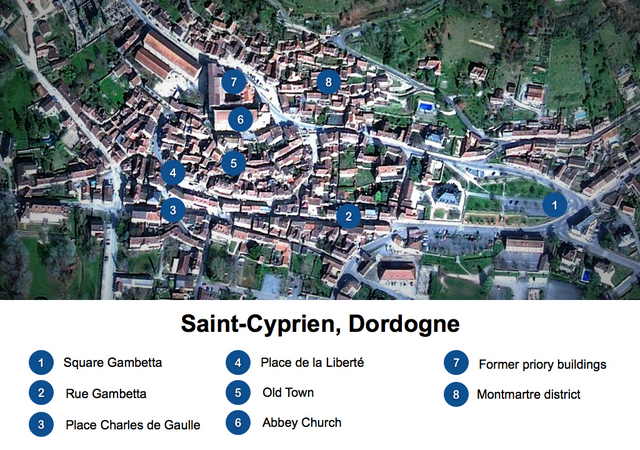
The main street of Saint-Cyprien is Rue Gambetta, lined with shops, restaurants and bars. With façades featuring fine iron-wrought balconies and carved stone window surrounds, Rue Gambetta is the perfect location for the traditional Sunday market.
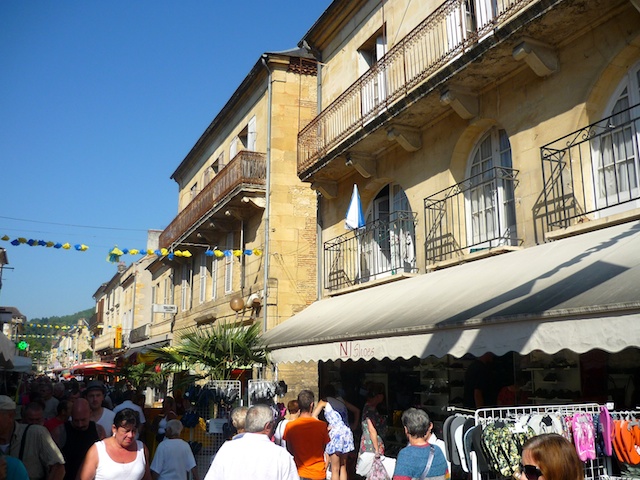
The Sunday morning event is very popular in the area where many delicious traditional local Périgordian foods are sold: Foie gras, saucissons, goat’s milk cheese, walnut cake, wines of Monbazillac, Pecharmant and Bergerac, without forgetting affordable fresh fruit and vegetables.
The Tourist Information Office is located at the western end of the street, on Place Charles de Gaulle.
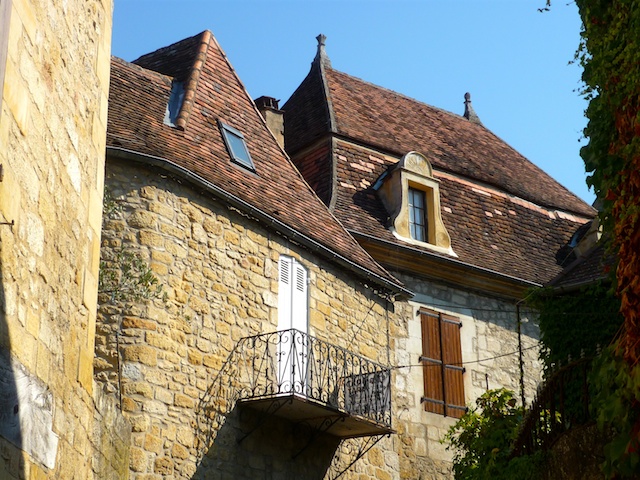
The old town of Saint-Cyprien starts behind the Rue Gambetta with its narrow steep streets leading up towards the abbey church. A few little squares can be crossed such as Place de la Liberté, Place des Oies (Geese square) where the market place was dedicated to the trade of all sorts of poultry, and Place du Terme (an Occitan word meaning “hill”).
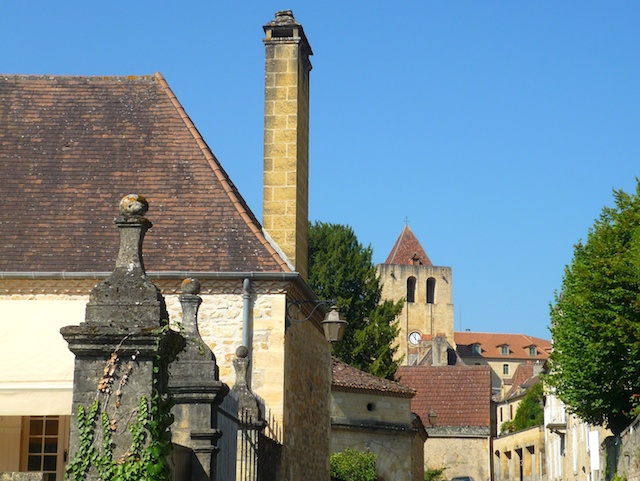
Above the abbey church lies the district of Montmartre where houses are squeezed together as most villagers wanted to live sheltered within the village’s walls. The steep narrow lanes command some fine views over Saint-Cyprien and the Dordogne Valley below.
The Abbey Church
The church is a sanctuary built mainly in the Romanesque style flanked by a massive fortified bell tower dating from the 12th century.
The nave and chancel are of Gothic style. The vaults were rebuilt after the Wars of Religion and date back to the 17th century.
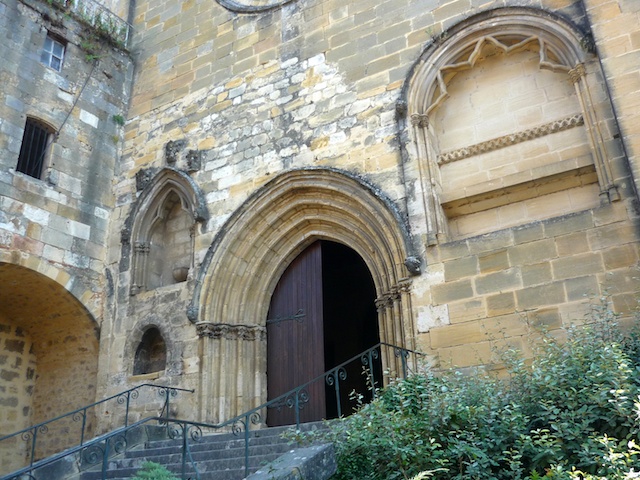
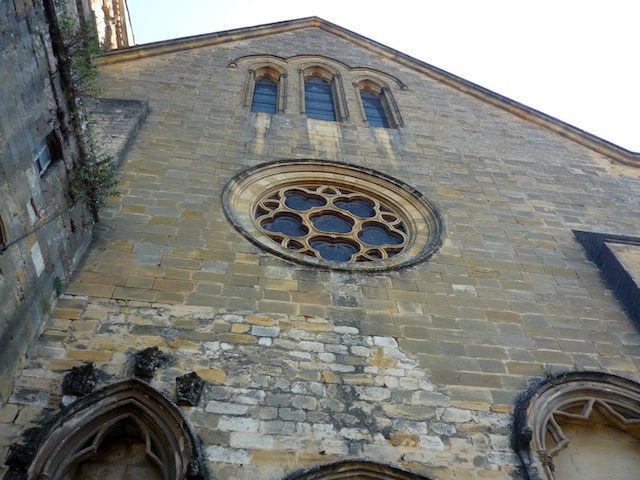
The Western façade is flanked by two flat buttresses and features a simplistic Gothic portal with four arches.
The portal is reached by a stair from Rue Bertrand de Got.
Old elements have been built into each side of the portal:
- to the left an “enfeu” (depository) from the 13th century under a pointed arch in 14th century style.
- to the right a poly-lobed fenestration like half a star under a semi-circular arch.
Above the portal is a rose-window added in the 19th century.
The interior furnishing is from the 17th and 18th centuries and includes some interesting pieces such as the pulpit, the chancel balustrade, the 32 stalls where the monks used to sit during the services, and the polychrome marble altar.
Encased in its Louis XIII style buffet, the organ was renovated in 1981 by German organ builder Grenzing when it was expanded to 22 stops and 1,250 pipes. Every year organ concerts are held in the church during July and August.
How to get there
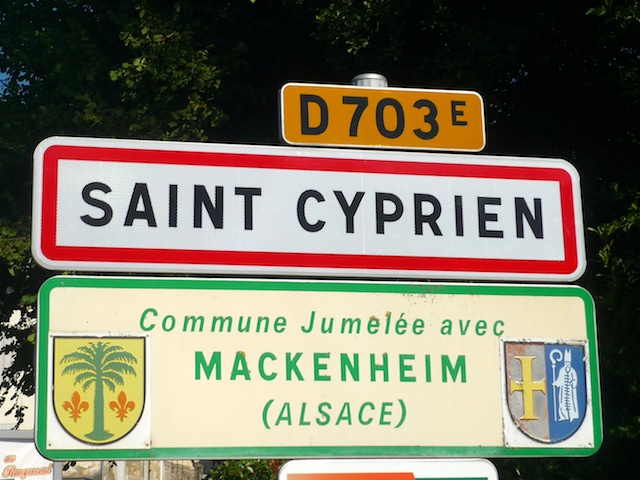
Saint-Cyprien is situated between Bergerac (54 km) and Sarlat-la-Canéda (19 km). The village is easily accessible by car from Paris, Bordeaux (180 km) and Toulouse, via the A20 and A89 autoroutes (French for motorways).
The TGV from Paris-Gare de Montparnasse takes 3 hours to Bordeaux. A SNCF regional train links Bordeaux St. Jean station to Saint-Cyprien in 2hrs30.
English-French Vocabulary
(f) for féminin, (m) for masculin and (v) for verbs
- abbey = abbaye (f)
- altar = autel (m)
- arch = arc (m)
- Barbarian Invasions = Invasions Barbares (f)
- bell tower = clocher
- buttress = contrefort (m)
- carved stone = pierre sculptée (f)
- caves = grottes (f)
- chancel = chancel (m)
- church = église (f)
- cloister = cloître (m)
- depository = enfeu (m)
- to destroy = détruire (v)
- French State Tobacco Company = Régie des Tabacs (f)
- furnishing = ameublement (m)
- Goat’s milk cheese = fromage au lait de chèvre (m)
- Gothic art = art gothique
- hermit = ermite (m)
- Hundred Years War = Guerre de Cent Ans (f)
- iron-wrought balcony = balcon en fer forgé (m)
- to list = classer (v)
- market = marché (m)
- monastery = monastère (m)
- national asset = bien national (m)
- nave = nef (f)
- organ = orgue (m)
- pointed arch = arc en ogive (m)
- portal = portail (m)
- priory = prioré (m)
- pulpit = chaire (f)
- to ransack = piller (v)
- Romanesque art = art roman
- roof = toit (m)
- rose-window = rocace (f)
- semi-circular arch = arc en plein cintre (m)
- stair = escalier (m)
- stall = stalle (f)
- storage = stockage (m)
- Temple of Reason dedicated to the Supreme Being = Temple de la Raison dédié à l’Être Suprême (m)
- valut = voûtes
- walnut cake = gateau aux noix
- warehouse = entrepot (m)
- Wars of Religion = Guerres de Religion (f)
- western façade = façade occidentale (f)
- window surrounds = encadrements de fenêtres (m)
Visit the Tourist Board website of the Dordogne Valley

